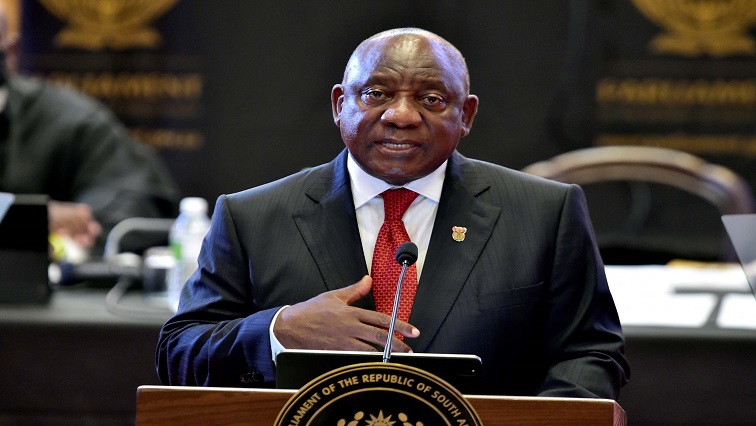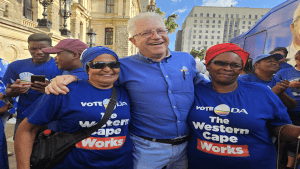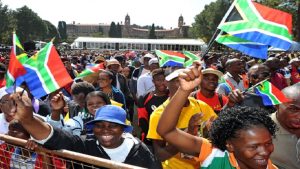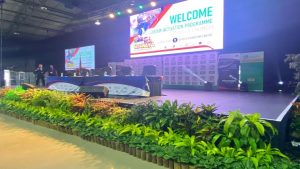President Cyril Ramaphosa will deliver his 8th State of the Nation Address (SONA) on Thursday, 8 February 2024, the final of the current administration.
Due to it being an election year, and a landmark anniversary of the country’s democratic victory, the president is expected to give a summary of achievements and challenges faced by the African National Congress (ANC) government in the past 30 years.
This of course will include the terms of all former presidents, from Nelson Mandela (1994 – 1999), Thabo Mbeki (1999 – 2008) and Kgalema Motlanthe (2008 – 2009), to the presidency of Jacob Zuma (2009 – 2018).
Ramaphosa’s presidential term has perhaps been one of the most difficult of all presidencies in South Africa’s democratic history, considering the 2020 COVID pandemic and the knock-on effect of the slowing global economy, the rising cost of living, high unemployment, high crime rate, and the unending issues besetting South Africa’s state-owned enterprises (SOEs).
In 2018, Ramaphosa brought with him a wave of optimism that swept across South Africa. His famous Thuma Mina (send me) SONA speech affirmed the belief that the businessman was indeed the right person to deliver a nation from all the gloom that characterised the Zuma era. The term ‘nine wasted years’ even began accumulating currency.
But the hard data has shown an altogether different picture.
Unemployment
South Africa’s unemployment rate was at 27.7% by the last quarter of 2017 and went up to 31.9% in Q3 of the 2023/24 financial year, down from 32.9% the previous quarter. The youth unemployment rate, measuring job-seekers between 15-34, stands at 42%.
Inequality
In March 2022, the World Bank report spotlighted South Africa as the most unequal country in the world, ranking first among 164 countries in the bank’s global poverty database. By December 2017, the Rand/Dollar exchange rate was around R12.37, but today the country’s currency has weakened to over R18,50 against the US-Dollar plunging people into poverty as the repo rate and inflation escalate.
One key factor impacting South Africans in the Ramaphosa era is the price of fuel. In 2017, a litre of petrol was in the R13,00 bracket, but depending on the geo-location can now go up to R26,00 per litre. High fuel prices have impacted on food costs. Food production and transportation costs have soared, impacting most of the consumer.
Eskom load shedding
In January 2018, fresh from the party’s December 2017 national conference, Ramaphosa began the process of dissolving the Eskom board that was led by Ben Ngubane. He went on to assure investors at the World Economic Forum in Davos that the country would never experience power cuts. We were convinced that the new broom was sweeping cleaner.
In comparison to all other boards that have sat in the Megawatt Park chambers, the previous Eskom board led by the late businessman Jabu Mabuza was the worst. Despite excellent academic credentials, the only thing they managed to provide consistently was media briefings detailing one load-shedding stage to another.
Despite excellent academic credentials, the only thing they managed to provide consistently was media briefings detailing one load-shedding stage to another. It is the same Board with its roots in big business that gave us the most horrible years in the history of power supply under democratic dispensation, and their legacy will continue to haunt us for years to come. It is during this period, based on SAPS statistics, that contact crimes increased by 18.5% and commercial crimes by 19.9%.
During the 2023 SONA, the president made promises and commitments meant for the stabilisation of the power utility. It was during this time that he announced the creation of the Ministry of Electricity in the Presidency, and Dr. Kgosientsho Ramokgopa was appointed.
SONA 2023 ESKOM PROMISES
-
- 300 MW had already been secured by Eskom from neighbouring countries.
- 9000 MW to be produced by 100 projects that were already underway
- 2800 MW new companies would enter renewable energy programmes to help Eskom
- R1.5 trillion would be invested in Just Energy Transition over the next five years
- R100 billion, the amount already attracted by the Northern Cape for renewable energy projects
- R400 billion Eskom debt that the National Treasury was expected to carry the burden
For as long as poverty, unemployment, inequality, load shedding, and crime are still with us, Ramaphosa and his cabinet shouldn’t be allowed to celebrate any milestone. The bridges, smart cities, and bullet trains he promised over the years are yet to appoint a consultant engineer.
– Article by SABC News Specialist Researcher, Maswele Ralebona






